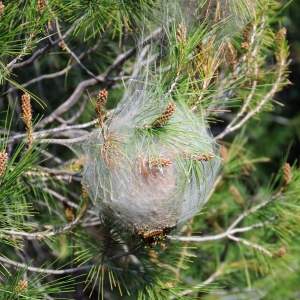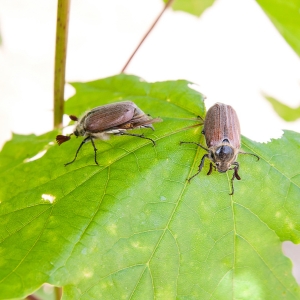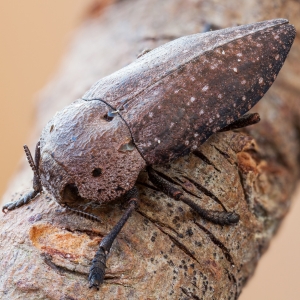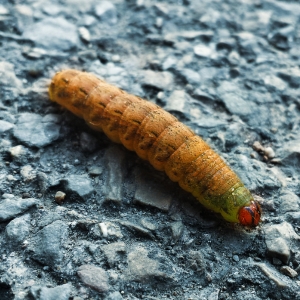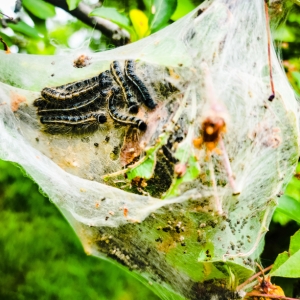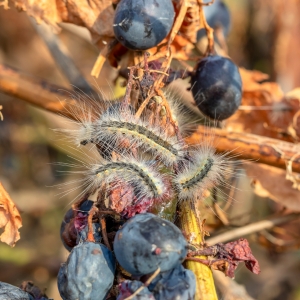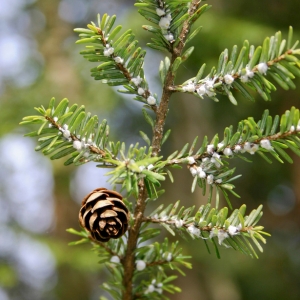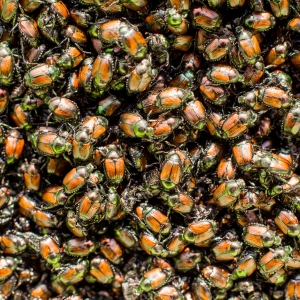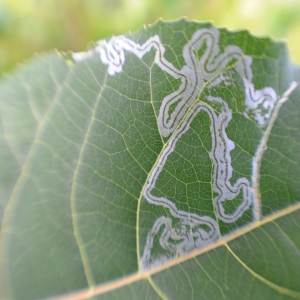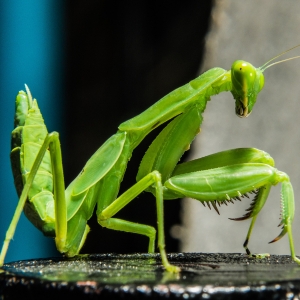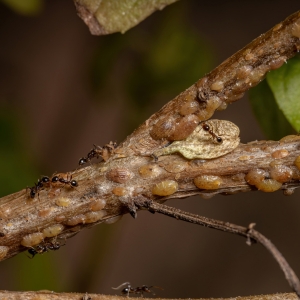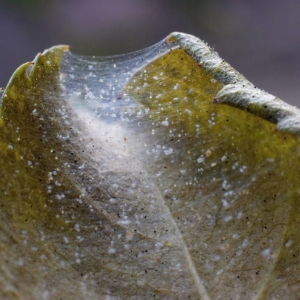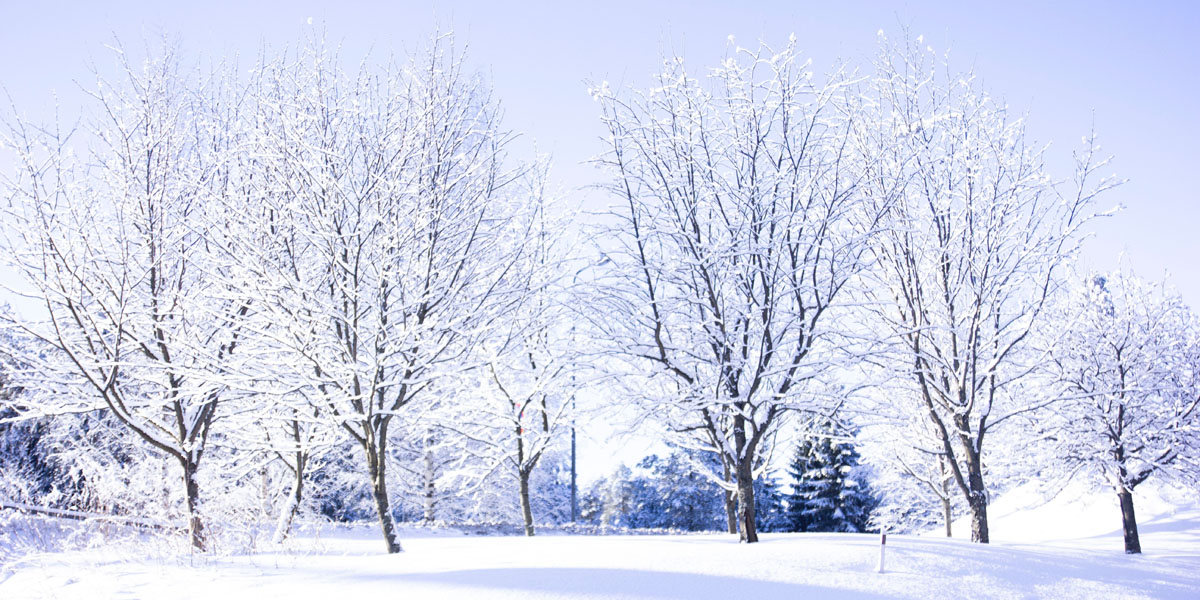Insects are cold-blooded, so how do they survive over winter in New Jersey? What happens to them when temperatures dip in fall and why do insect pests seem to be some of the first creatures to appear in spring? From ticks and mosquitoes to spotted lanternfly, Japanese beetles, and Eastern tent caterpillars, we’ll uncover their winter survival tactics so you can better combat insects that survive New Jersey winters.
Winter Survival Strategies of Insect Pests
Insects that attack trees in New Jersey use several mechanisms to survive over the cold winter months and do so at different lifecycle stages.
Overwintering as Eggs
Insects like the spotted lanternfly, spongy moth, Asian longhorned beetle, and Japanese beetles, lay eggs in the fall on various surfaces, including trees and other hard structures. These eggs can survive the winter and hatch in the spring, continuing the insect’s life cycle.
Hibernation
Some insects enter a state of hibernation or diapause during the winter months to conserve energy and survive harsh conditions. This dormancy allows them to withstand cold temperatures until favorable conditions return.
Seeking Shelter
Insects may seek shelter in protected areas such as tree bark crevices, leaf litter, or other insulated locations to shield themselves from extreme cold and adverse weather conditions during the winter. Some, such as ladybirds and stink bugs, will even choose your home as a welcoming shelter in which to spend the winter!
Staying Near Host Plants
Insects like the spotted lanternfly may remain near their host plants during winter, using them for protection and sustenance. This proximity to food sources helps them survive until spring when they can resume feeding and reproduction.
By employing one or more of these survival strategies, insects that attack trees in New Jersey can endure the winter months and emerge in the spring to continue their life cycles and inflict damage to trees and vegetation.
Check Your Trees for Egg Masses in Winter! Egg masses laid by different insects may be difficult to spot but once you know what to look for and where to find them, you’ll learn to recognize their distinctive characteristics. While spotted lanternflies favor trees of heaven and fruit trees for egg-laying, they will deposit their egg masses on almost any flat, smooth, vertically oriented surface. This can include vehicles, park benches, steps or outdoor stairways, and the sides of buildings.
Hibernation
In New Jersey, some insects that attack trees survive over winter by hibernating. Here are some examples of insects that hibernate to survive the winter in New Jersey:
- Beetles and True Bugs: Various types of beetles, such as June beetles and ladybugs, seek warm places to overwinter. Ladybugs prefer to shelter in tree cavities, under loose bark, or inside buildings. True bugs like box elder bugs also move indoors for winter.
- Mosquitoes and Flies: Mosquitoes, houseflies, and blowflies are among the insects that hibernate. They find shelter in hollowed-out logs, trees, cracks in the ground, and buildings. They may wake up during warmer spells even in the middle of winter and return to hibernation when temperatures drop.
- Bees and Wasps: Bumblebees and honey bees hibernate in underground burrows or clusters inside hives to survive the winter. Some types of wasps, like yellowjackets, also hibernate, with queens emerging in spring to find new nesting locations.
- Moths and Butterflies: Most species of moths and butterflies spend their winters in a hibernation-like state called stasis. A few species, such as the Monarch butterfly, migrate to warmer locations.
Common Insects That Survive Over Winter in New Jersey
Aphids
Aphids are cold-hardy insects that have adapted to survive regional weather fluctuations by overwintering in several stages of their lifecycle. Adults and nymphs can survive in temperatures below 30°F (-1.1°C). While research indicates that aphids experience high mortality rates during winter, often exceeding 80% across various species and life stages, many do manage to stay alive through the winter.
Female aphids lay eggs in the latter part of the year, depositing them around their preferred food sources. When winter arrives, the eggs enter diapause (hibernation), providing protection against freezing temperatures. Some eggs can even endure short-term exposure to temperatures as low as -40°F (-40°C). Once warm weather returns, female aphids hatch from the eggs and begin feeding and reproducing new generations.
Bagworms
Bagworms survive winter by overwintering as eggs protected by both their bags and the dead bodies of females. The eggs remain inside the female pupal case and are covered by silken bags until they hatch in late spring.
Exposing bagworm eggs to temperatures of -18°C for 24 hours can kill approximately 50% of the eggs. However, urban microclimate warming can improve the overwintering survival of bagworms. Impervious surfaces like roads, buildings, and parking lots can create warmer microclimates that benefit the survival of bagworms during winter.
Beetles
Beetles in New Jersey survive over winter by seeking out warm places to overwinter and take a long nap. Different types of beetles, such as June beetles, dig burrows underground and hibernate below the frost line. Ladybugs, also known as ladybird beetles, prefer to shelter from the cold in tree cavities, under loose bark, and inside buildings. They tend to group together in large colonies rather than hibernate individually. True bugs like box elder bugs also move indoors for winter whenever they find an entry point. Beetles do not enter total hibernation; instead, they may wake up and move around for a day or two when the weather warms up.
Bronze Birch Borer
The Bronze Birch Borer survives over winter in New Jersey by overwintering as larvae under the bark of birch trees. During the winter months, the larvae remain dormant until the early spring when temperatures rise. As the weather warms up, the larvae become active again and resume their feeding activities.
Cankerworm
Cankerworms, specifically the spring cankerworm (Paleacrita vernata) and the fall cankerworm (Alsophila pometaria), are native pests that cause serious defoliation in deciduous forest, shade, and ornamental trees. These pests lay their eggs in trees during the fall season where the eggs remain dormant throughout the winter. As temperatures rise in spring, the eggs hatch towards the end of May.
Eastern Tent Caterpillar
Tent caterpillars, like the Eastern Tent Caterpillar, survive over winter in New Jersey by overwintering as eggs. The adult female tent caterpillars lay eggs in masses containing hundreds of eggs on small outer twigs. These appear as shiny brown bands and can be easily recognized and removed by hand. During winter, the eggs remain dormant until the following spring when they hatch into young caterpillars.
Fall Webworm
Fall webworms in New Jersey survive over winter by dropping to the ground, pupating to overwinter, and emerging as adult moths late in the spring or summer to lay new eggs. These native insects can be prevalent on certain tree species like Cherry, Crabapples, Elms, London Planes, Maples, Sweetgum, Tree of Heaven, Willows, and Birches. While fall webworms may look unsightly on trees, they typically do not cause significant damage.
Hemlock Woolly Adelgid
Hemlock woolly adelgids (HWA) overwinter as both adults and eggs. They prepare for winter by reaching maturity between late winter and early spring. If you look carefully, they can be seen at the base of individual needles, covering themselves with fluffy white, cottony wax. The mature adelgids also lay brownish-orange eggs under the protective cottony wax, where the eggs overwinter until they hatch from February through June.
Adelgids in any stage may be killed by extremely cold temperatures, such as during polar vortex events where temperatures drop as low as -20 degrees Fahrenheit. However, those that survive tend to develop larger egg masses and wool in the absence of competition compared to surrounding winter-killed HWA.
Snow cover can protect HWA and enhance winter survival. For example, infested limbs closer to the ground that are buried under snow have higher survival rates. To prevent inadvertently helping this pest survive, avoid covering infested hemlocks during snow plowing and removal.
Japanese Beetles
Japanese beetles survive harsh winter conditions by hibernating as immature grubs (larvae) deep in the soil. As temperatures cool off in the fall, the grubs burrow into the soil, typically reaching depths of 2 to 6 inches. They may tunnel even deeper if the soil becomes too cold during winter.
Soil acts as an insulator, protecting the grubs from extreme temperatures above ground. Studies have shown that Japanese beetle grubs can survive down to around 9°F. Soil temperatures across New Jersey generally hover between 20 to 30 degrees during winter, providing a relatively stable and insulated environment for the grubs.
This hibernation strategy allows Japanese beetle grubs to withstand harsh winter conditions and emerge as adults in the following summer.
Leaf Miners
Leaf miner insects survive New Jersey winters by entering dormancy and overwintering in the soil beneath the plants on which they feed.
Once the larvae near pupation, they chew through the skin of the leaf and drop onto the ground below, burrowing an inch or two beneath the surface. If the weather is too cold for them to survive in an active state, the larvae enter dormancy and overwinter in the soil. Otherwise, they form a pupa and transition into adulthood when conditions are favorable. This strategy allows leaf miner insects to endure winter conditions and emerge in spring to continue their life cycle.
Lady Beetles
Ladybugs in New Jersey survive over winter by hibernating in clusters to stay warm. During hibernation, ladybugs gather in large numbers, as the more beetles that cluster together, the more body heat they generate, increasing their chances of survival. They seek shelter in places like logs, rotted tree stumps, and leaves until the springtime. While some ladybugs prefer hibernating outside, the Asian lady beetle tends to seek the warmth of homes, leading to sightings of orange and yellow-hued insects indoors.
Mosquitoes
Mosquitoes in New Jersey survive over winter through various strategies, depending on the species.
Adults of the northern house mosquito, Culex pipiens, found in urban and suburban areas, usually die upon the first hard frost in fall. However, those that find their way indoors can pass the winter in diapause (hibernation) in places such as attics, basements, and outbuildings. Similarly, inseminated adult Culex territans females overwinter in subterranean enclosures in a state of torpor.
Some species, such as the Asian Tiger Mosquito (Aedes Albopictus), overwinter as eggs. At the end of the fall season, the adult females of these species will lay eggs in as little as ½ inch of standing water. As the temperature drops, the eggs will enter diapause until temperatures are steadily above 50 degrees Fahrenheit, at which point the eggs will hatch. The eggs are usually drought-resistant and cold-hardy; they can be dry for over a year and can survive New Jersey’s winter weather.
DID YOU KNOW? We offer highly effective mosquito control programs!
Praying Mantids
Praying mantids in New Jersey survive over winter by overwintering as eggs. Female mantids deposit egg cases, known as oothecae, on upright vegetation like tree branches or meadow plant stems in autumn. These brown, styrofoam-like egg cases contain over 100 eggs that endure the winter chill until the return of warm weather in spring. When small insects become available in spring, tiny mantises hatch from the egg cases and begin searching for prey.
Scale Insects
Scale insects in New Jersey survive as adults over winter by remaining dormant and inactive during the colder months. Most scale insects are not actively developing during winter, making it an ideal time to identify infestations and implement management strategies.
Spider Mites
The winter survival of spider mites depends on the species. Some mites, like the two-spotted spider mite and honeylocust spider mite, survive as adults by hiding in garden debris or other protected areas.
Other species survive over winter in the egg stage. For example, cool season mites, such as the spruce spider mite, begin rebuilding their populations in September and peak in November, with overwintering eggs laid when nighttime temperatures consistently drop below freezing.
Ticks
Ticks exhibit different behaviors and adaptations to survive winter. Some species may seek shelter in protected areas (such as your home!), while others may remain active throughout the season.
Many native tick species remain active in cold weather and can cause illnesses during the winter months in New Jersey. This includes the black-legged deer tick, which is known to transmit Lyme disease and other tick-borne illnesses.
Even invasive tick species have been observed to survive harsh winters in New Jersey, raising concerns about their potential permanent presence in the region. This resilience indicates that these ticks can persist through winter conditions and continue to pose a threat.
Ticks can find their way indoors by hitching rides on pets or rodents. Once inside a warm house, ticks can survive and continue to pose a threat by biting humans.
Warmer winters in New Jersey can affect tick survival rates, potentially increasing the threat of tick-borne diseases year-round. Mild winters can boost tick survival, making them a persistent concern even during colder months.
Looking for effective tick and mosquito control options? Check out our annual treatment programs!
Winters in New Jersey are Getting Warmer
Data from multiple sources indicate a clear pattern of warming winters in New Jersey over recent decades, with implications for weather patterns and ecosystems in the region.
According to New Jersey state climatologist, Dr. David Robinson, New Jersey has been experiencing a climate that is steadily getting warmer overall. The National Weather Service outlook for this winter leans towards above-normal temperatures in New Jersey.
Nine of the top ten warmest winters in New Jersey since record-keeping began in 1895 have occurred since 1990. The average temperatures for winters observed from December 1 through February 28 have been consistently higher in recent years, with the winter of 2022-23 being the second mildest winter on record.
New Jersey’s average temperature has warmed faster than that of any other state in the last 100 years, with an increase of 2.55 degrees during the last century.
How Warmer Winters Affect Insect Pest Populations
Warmer winters in New Jersey can have significant effects on insect pests that attack trees, with serious implications for plant and human health. Here’s what you can expect:
- Greater Survival of Overwintering Insects: Warmer winters allow more overwintering insects to survive, leading to increased populations of pests. These pests can emerge earlier in the year if temperatures permit, potentially causing earlier and more severe infestations.
- Increased Pest Activity During Winter: A milder winter can result in more pests being active on warm days during late winter and early spring. This extended warm season allows pests like ticks to reproduce and thrive, posing a higher risk to both humans and trees.
- Increased Impact on Agriculture: Pests such as the Spotted Lanternfly and Emerald Ash Borer benefit from warmer winters, potentially leading to greater damage to agricultural crops and hardwood trees.
- More Indoor Pest Infestations: Warmer winters may also influence the behavior of indoor pests like cockroaches, bed bugs, and stink bugs. These pests may seek shelter indoors during milder winters, increasing the risk of infestations in residential areas.
Protect Your Trees & Landscape from Overwintering Insect Pests
With winters in New Jersey getting warmer, it can disrupt the natural balance of insect populations, leading to earlier emergence, increased activity, and potential threats to both trees and human habitats. That makes effective pest management strategies and monitoring even more critical to help mitigate the impact of these changing winter conditions on insect pests.
Call the arborists and experienced tree health team at Alpine Tree in Morristown, NJ for a tree and garden inspection. We’ll let you know if there are any insects overwintering on your trees and recommend the best way to ensure that they don’t come out in droves to bug you this spring.
Call 973-964-7798 or use our online form to get started.






